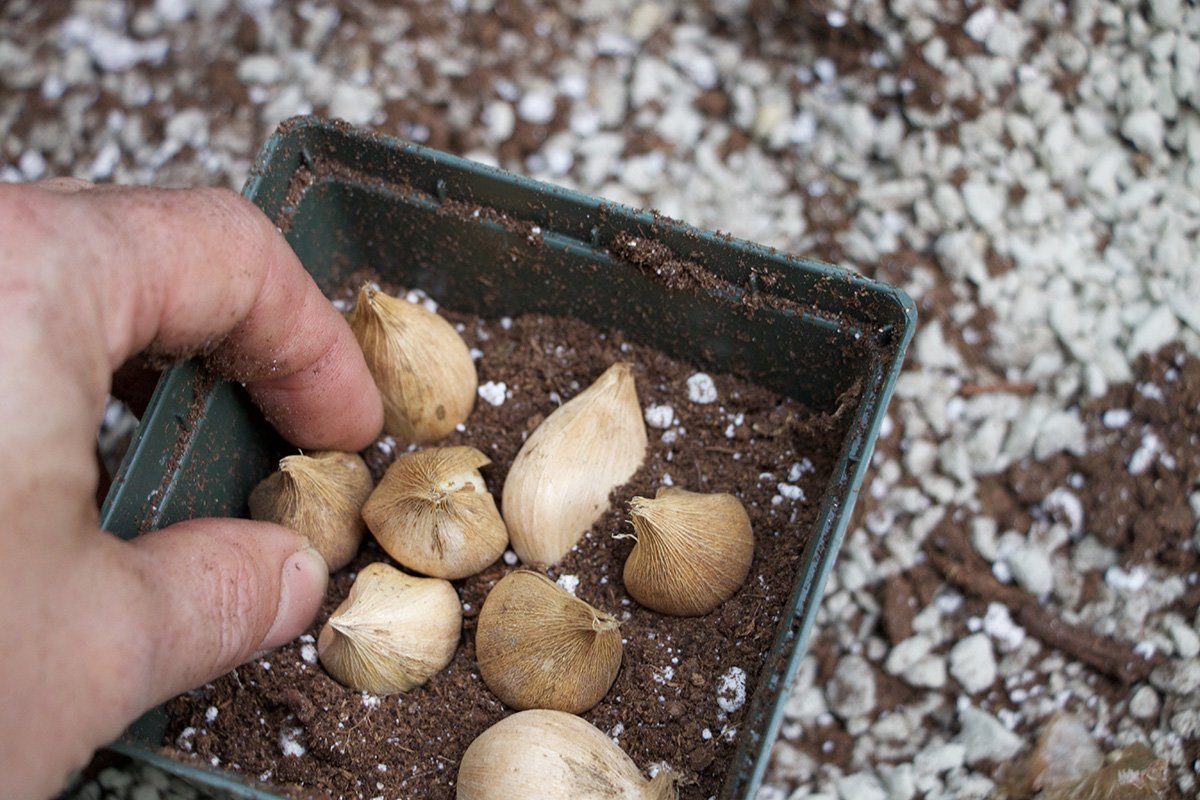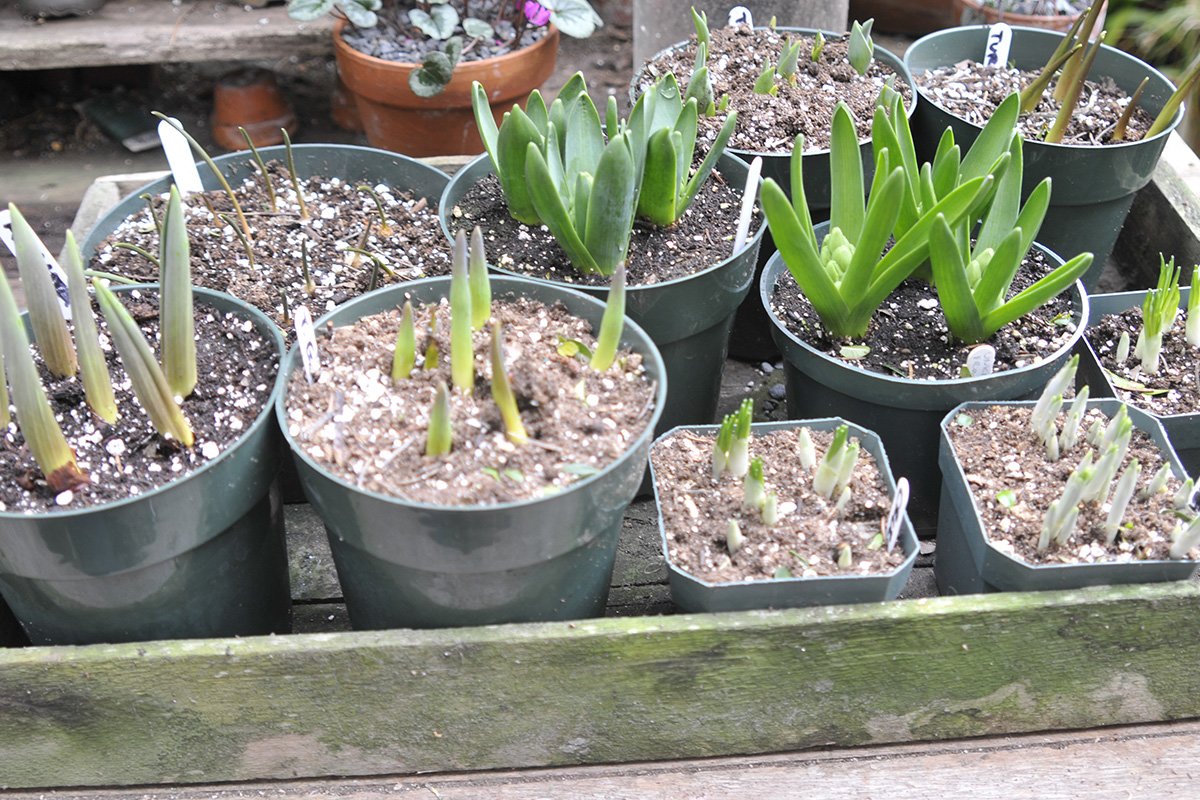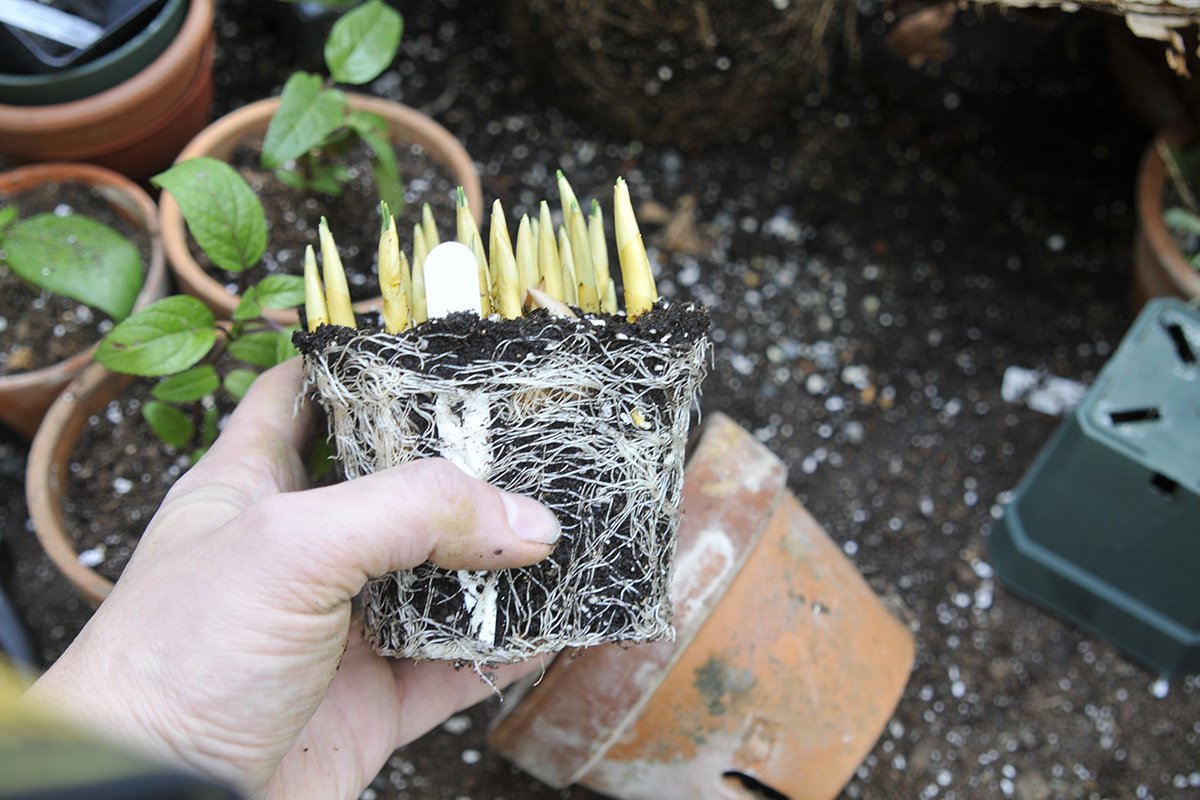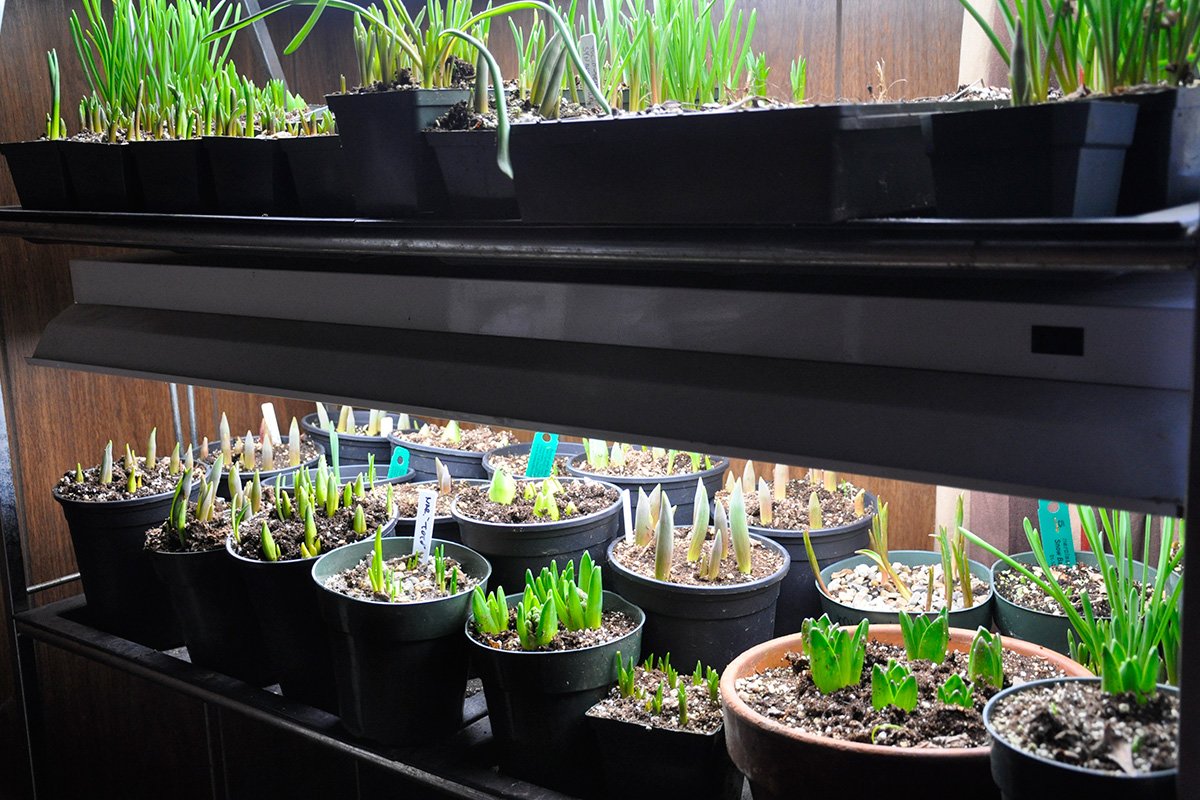
Forcing Small Bulbs for a Display Indoors
A windowsill of fragrant, homegrown spring blooms can flower in your home as early as mid-January. While daffodils, tulips, and hyacinths (Hyacinthus spp. and cvs., Zones 5–9) often take 16 weeks to chill and come into bloom, many smaller bulbs come into bloom sooner. These smaller bulbs are easier to force at home and require less space, and their smaller pots are less expensive.

I like to force many pots of different varieties of reticulated iris and then bring them into bloom at the same time to appreciate the various nuances between them at eye level. The pictured cultivars include ‘Pauline’ (purple) and ‘Rhapsody’ (blue).
What to force
Crocuses are easy starter bulbs. Both the species and hybrid Dutch crocuses (Crocus vernus, Zones 3–9) are easy to grow and inexpensive. Small bulbous irises like dwarf iris (Iris danfordiae, Zones 5–9) or reticulated iris (I. reticulata, Zones 5–8) are sensational in pots, coming into bloom even quicker than crocus and putting on a sensational show on a cool windowsill. Dwarf and reticulated iris will often come into bloom in just a few days. Crocuses and these irises are the first to come out of their winter sleep for me, as early as New Year’s Day or early January. Grape hyacinths (Muscari spp. and cvs., Zones 4–8) follow just after that in late January.

All small bulbs should be set into a pot filled with potting soil near the surface and close together. Touching is OK, as most bulbs like to be growing shoulder to shoulder. If you only have a few bulbs, set them together in the center of the pot.
Potting up bulbs
All small forcing bulbs should be potted up in plastic pots (as clay may crack with the cold). Plant as many bulbs as possible in each pot; bulbs can touch each other. I use 4- to 6-inch pots that will fit on my windowsills. Use a good, well-draining potting soil, covering the bulbs with only half an inch of soil that will help them remain dark. The top of the bulbs should be positioned just barely under the surface, and an extra layer of grit or small gravel may help to keep the soil from floating out once you water, and it often looks more attractive. Water well, just once, and set the pots in a special place where they can remain cold but not freezing.

The later one waits to remove bulbs from cold storage sites, the quicker they come into bloom. These pots are coming out of a cold garage in late February are ready to bloom.
Chilling bulbs
Most home gardeners don’t have access to a frost-free cold frame (I don’t have one either), but any dark, cold spot that remains above freezing but below 40°F will do. Find a unique chilling spot that works for you. It might be an outdoor shed, an unheated garage, or even the bottom stair of an outdoor cellar well. If you think that the temperatures might still dip below freezing, add a second layer of protection. You can put them to sleep in either a trash bag full of straw or wood shavings, or an insulated drink cooler.

An early planting of small bulbs in October ensures a pot full of roots by the end of December. These crocuses are showing strong noses, a sign that they are ready to pop into bloom once brought indoors around mid-January.
Forcing indoors
After 12 to 14 weeks of chilling, the first bulbs should be ready to force. These are usually the bulbous irises, which will show a white shoot, or “nose,” emerging from the soil—an indication that they are ready. To reduce any shock, gradually introduce pots to warmer temperatures. A bright spot in a sunny window works, but a spot under lights is even better. Leave them there until buds emerge, at which time you can appreciate the show of flowers. I also like to repot my forcing bulbs once they come indoors, transferring the entire root ball from the plastic pot to a nicer clay pot.

When forcing early in January, bulbs benefit from extended daylight. A week or two under an LED plant light unit with a timer set to 16 hours of light will speed things up and help flowers develop brighter colors.
Perennializing bulbs
After bulbs bloom, they can be saved and planted outdoors if you have the space to grow the bulb foliage. Most will bloom again outdoors the following spring. If replanting is too much mess and bother, you can throw each pot’s contents on the compost pile.










